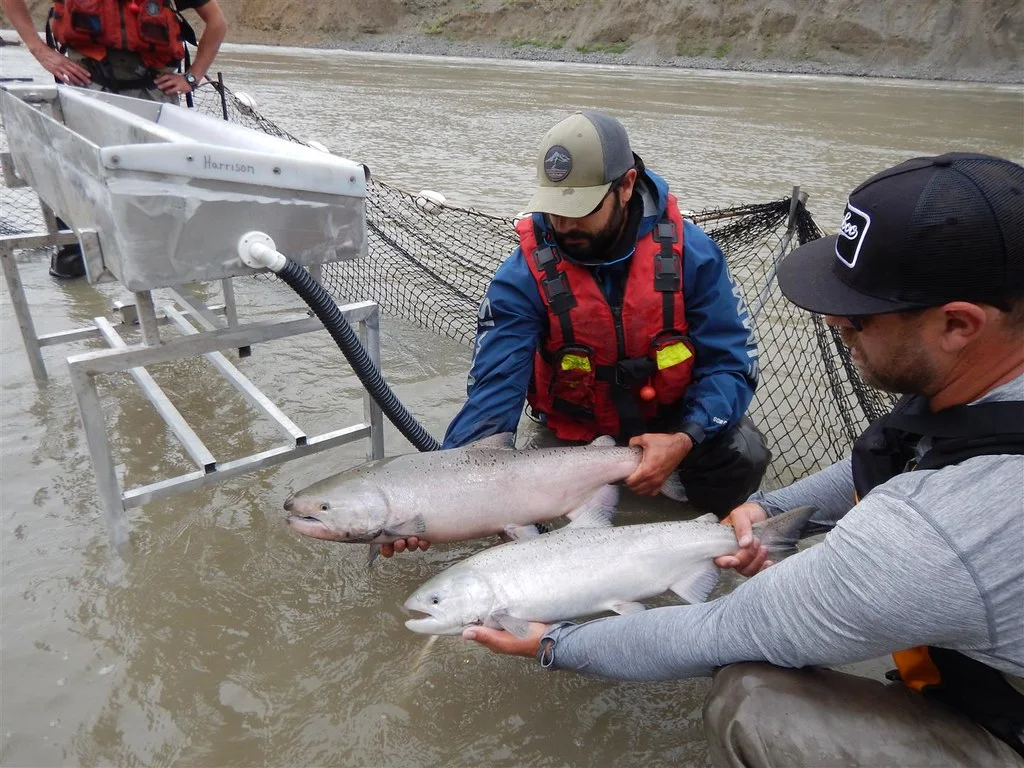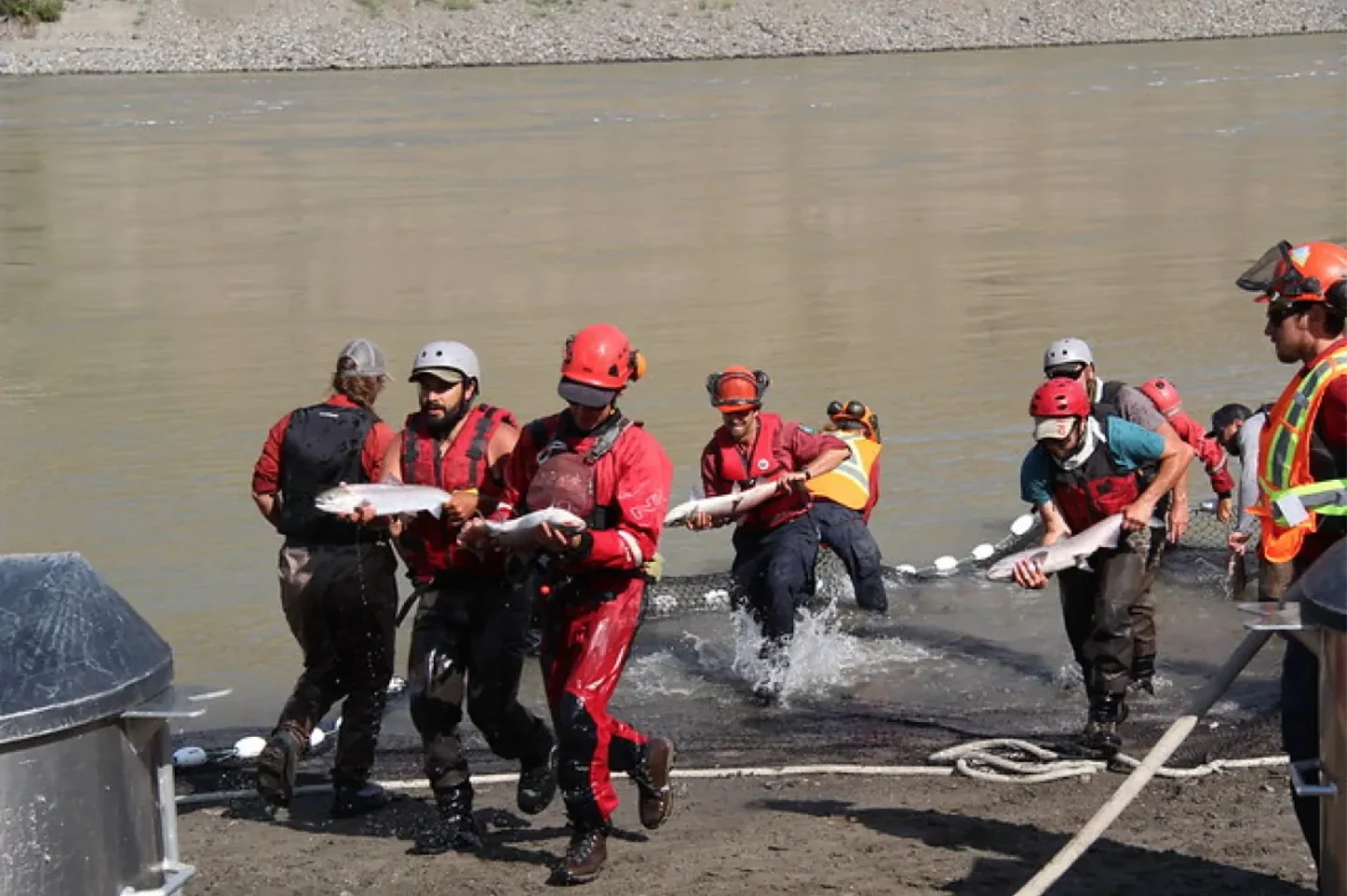
Some B.C. salmon runs face 'chance of extinction' after landslide
Scientists fear that some Fraser River salmon populations could be wiped out completely following a landslide that has blocked part of the critical B.C. migration route for the last year.
Federal government scientists told the Pacific Salmon Commission there is a "meaningful chance of extinction" for three salmon runs after the Big Bar landslide, according to a copy of a PowerPoint presentation, dated Oct. 16, obtained by CBC News.
That includes the Early Stuart sockeye and the Mid-Fraser and Upper Fraser Spring 1.3 chinook populations.
The landslide prompted officials at multiple levels of government to organize a rescue mission that saw thousands of salmon, which are very vulnerable to stress, lifted by helicopter across the rocks that blocked their migration route.
SEE ALSO: 'The Blob' can be a real terror for West Coast marine life
But despite that effort, prospects are dismal for the salmon in the upper reaches of the river, according to Dean Werk, president of the Fraser Valley Salmon Society.
"We're talking about virtually a collapse — a total collapse — of the salmon stocks above the Big Bar slide," Werk told CBC.
"This is devastating to the wild salmon population. Some of those upper river streams were supposed to be the largest component of this year's sockeye run."
The landslide sent massive chunks of rock crashing into the river north of Lillooet, creating a five-metre high waterfall and impassable obstacle for migrating salmon.

Crews moved the fish into oxygenated transfer tanks to await transportation by helicopter during the rescue efforts. (Province of British Columbia )
Satellite imagery has confirmed that the slide happened in October or November 2018, but officials at Fisheries and Oceans Canada (DFO) say because of the remote location, it wasn't reported until June 23.
In an attempt to save this year's salmon runs, more than 60,000 fish were captured, stored in tanks, and then lifted past the obstruction by helicopter over the summer. Some others eventually managed to swim past without human help.
According to Werk, at least half of the fish that were transported past the landslide died before they made it to their spawning grounds. Though he's yet to see final numbers from the federal government, it's his understanding that some streams upriver from the slide have seen less than 10 per cent of their projected returns.
URGENT CALL FOR ACTION
Werk says the federal government should declare a state of emergency and make saving the salmon of the upper Fraser a priority. The first step, in his mind, would be removing the obstruction.
"If we do not look after coming up with a very fast solution over the winter months … this is going to be compounded two seasons in a row," Werk said.
He wrote to the federal government on behalf of the Fraser Valley Salmon Society earlier this month, pleading for action before the 2020 runs.
The federal and provincial governments, along with multiple First Nations, were all involved in the effort to save the 2019 salmon run.
A DFO spokesperson said it's too early to confirm how many fish made it back to their spawning grounds, but acknowledged that some runs are expected to have low numbers this year, in part because of the Big Bar slide.
"While some early estimates on 2019 returns are circulating, work is ongoing to finalize the scientific evaluation around the fish migration, spawning and mortality data, which will be released once completed," Louise Girouard told CBC in an email.
Even without those concrete estimates, the overall picture for Fraser River salmon looks bleak.
WATCH BELOW: SALMON IN BC HAVE TWO DIFFERENT STORIES IN THE PROVINCE
In September, the federal government department drastically dropped the number of expected 2019 Fraser River sockeye returns to a little more than 600,000, down from an earlier projection of close to five million.
Werk described 2019 as a "devastating" year for B.C.'s salmon, but says he hasn't lost hope.
"Fish have a natural ability to bounce back, but without intervention by government agencies, there would be no rebounding," he said.
Girouard, the DFO spokesperson, acknowledged that the problem will require a sustained effort in the short term and into the years ahead in order to protect future salmon stocks. She said there will be "rock manipulation" underway throughout the winter to make it easier for fish to move past the obstruction.
OFFICIALS AIRLIFT THOUSANDS OF SALMON AFTER LANDSLIDE:
This story, written by Bethany Lindsay, was originally published for CBC News.










